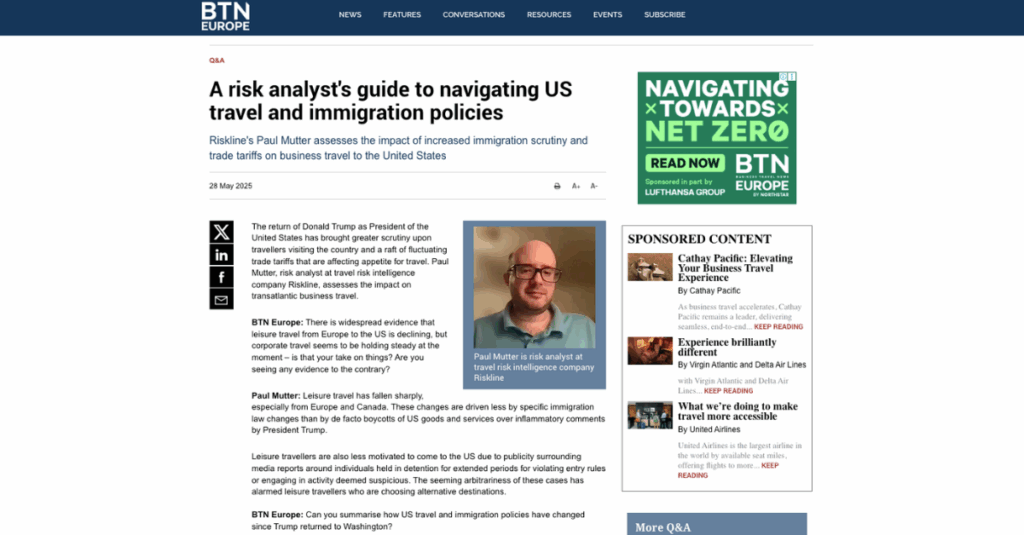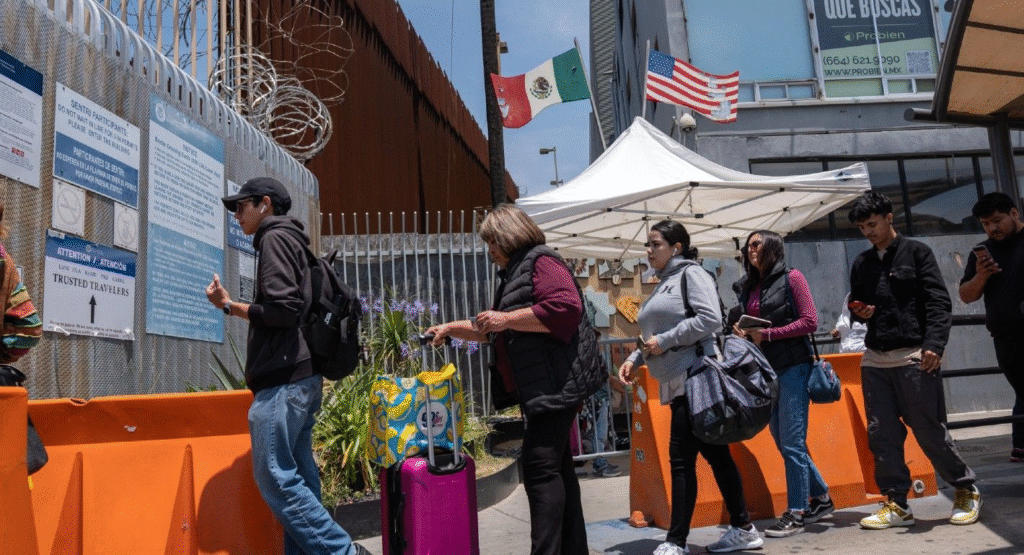
In 2025, U.S. immigration policies have shifted dramatically. From the end of Temporary Protected Status (TPS) for Venezuelans to stricter asylum rules, new visa fees, and sweeping enforcement actions, the landscape is evolving quickly. These changes affect millions of immigrants, families, and employers across the country. This article explores the most important developments, practical impacts, and answers to trending questions that Americans are asking right now.
Introduction: A Nation in Transition
Immigration has long been at the heart of the American story. From Ellis Island arrivals to contemporary asylum seekers, debates over who belongs in the United States shape the nation’s politics, economy, and identity.
In 2025, the immigration landscape has entered a new and turbulent chapter. Policies are shifting almost monthly—affecting border security, asylum eligibility, visas, and long-standing humanitarian protections. Families are facing uncertainty, businesses are reeling from labor shortages, and immigrant communities are navigating fear and confusion.
This blog takes a comprehensive, human-centered look at these recent developments, drawing from credible sources and real-world examples. By the end, you will have a clearer understanding of how immigration in the United States is changing and what it means for people on the ground.
What Major Legislative Changes Have Impacted Immigration in 2025?
The Laken Riley Act: Expanding Mandatory Detention
One of the most widely discussed developments in 2025 has been the Laken Riley Act, signed into law in January. Named after a Georgia nursing student tragically killed by an undocumented immigrant, the law has sparked heated debate.
The act requires mandatory detention without bond for noncitizens charged—not convicted—with theft, assaulting law enforcement, or crimes resulting in serious bodily injury. Supporters argue this strengthens public safety. Critics argue it violates due process and leads to unnecessary detention of individuals who may later be found innocent.
Real-life example: In Texas, Maria, a single mother, lives with a roommate who was charged with shoplifting. Under this law, her roommate could face detention without bond—even before any trial. For Maria’s family, the fear of enforcement agents showing up at their door has upended daily life.
The “One Big Beautiful Bill Act”: Billions for Enforcement
Another sweeping legislative development is the One Big Beautiful Bill Act, signed in early 2025. This law sets aside $170 billion for immigration enforcement and border security through 2029.
Key provisions include:
- Expanding ICE detention capacity by 100,000 beds.
- Hiring 10,000 new ICE and Border Patrol agents.
- Funding new walls, surveillance technology, and infrastructure at the U.S.–Mexico border.
While proponents say this is necessary to “restore control,” immigrant communities fear a new era of mass enforcement.
On the ground in California: Residents of Calexico saw a massive detention center built in weeks thanks to this funding. Families with mixed immigration status—many with U.S. citizen children—live in constant fear of raids.
Executive Order 14159: “Protecting the American People Against Invasion”
On his first day back in office, President Trump signed Executive Order 14159, which fundamentally altered enforcement priorities.
The order:
- Expanded expedited removal nationwide.
- Penalized sanctuary jurisdictions by threatening to cut federal funds.
- Imposed civil and criminal penalties on undocumented presence.
- Directed mass hiring for ICE and CBP.
Community reaction: San Francisco, a self-declared sanctuary city, filed a lawsuit arguing that the order unconstitutionally punishes local governments. In April, a federal judge temporarily blocked the administration from withholding federal funds.
How Has Asylum Policy Changed—Especially for Survivors of Abuse or Violence?
In 2025, asylum policy took a sharp turn. Attorney General Pam Bondi issued rulings narrowing the definition of “particular social group,” which is central to many asylum claims.
This specifically impacts:
- Survivors of domestic violence.
- Individuals fleeing gang-related persecution.
- Families persecuted by private actors.
Now, applicants must show that they face persecution from a government or entity the government cannot or will not control—making claims based on private violence far harder.
Case study: Ana, a Honduran woman fleeing years of abuse, once had a strong asylum claim. Under Bondi’s new ruling, her case faces near-certain denial. Advocates say this change could put thousands of women and families at risk of deportation back to life-threatening conditions.
What’s New Regarding Temporary Protected Status (TPS)?
TPS has historically provided safe haven for nationals of countries facing conflict or natural disasters. In 2025, however, the DHS announced it would terminate TPS for Venezuelans, affecting about 200,000 people.
Consequences:
- Families who have lived and worked legally in the U.S. for years may suddenly face deportation.
- Employers lose reliable workers in industries like construction, hospitality, and healthcare.
- Children born in the U.S. may face separation from parents.
Community organizations are scrambling to provide legal advice and advocate for extensions, but the future remains uncertain.
How Heavy Is U.S. Immigration Enforcement Now?
Operation Safeguard
Early in 2025, the administration launched Operation Safeguard, a high-speed enforcement campaign targeting undocumented migrants in major cities. To date, ICE has detained and deported more than 23,000 people.
Impact in Chicago: Families report children being left at school when parents were suddenly taken by ICE. Local nonprofits are overwhelmed providing emergency care and legal support.
Angola Detention Strategy
One of the most controversial steps has been converting part of Louisiana’s Angola State Penitentiary into an ICE detention facility. About 400 immigration detainees are being held there. Critics argue that the prison’s history of brutality and inhumane conditions make it unsuitable for immigration detention.
Officials privately acknowledge that the harsh conditions are intended to encourage “voluntary self-deportation.”

What Judicial or Due Process Changes Are Underway?
To tackle the massive 3.5 million case backlog, the Pentagon authorized up to 600 military attorneys to temporarily serve as immigration judges. While this doubles capacity, concerns remain:
- Many military attorneys lack specialized training in immigration law.
- Immigrants may face judges unfamiliar with asylum and humanitarian protections.
- Advocates fear due process will suffer.
For individuals waiting years for their cases, this could speed resolution—but not necessarily in their favor.
How Are Visa Policies Being Tightened?
Visa reforms have hit multiple groups hard in 2025.
- Visa Integrity Fee: Beginning October, applicants from non–visa waiver countries (India, China, Brazil, etc.) must pay an extra $250 fee, bringing total costs to $442. This makes U.S. visas some of the most expensive in the world.
- Student and Journalist Visa Caps: New proposals cap F and J visas (students/cultural exchanges) at 4 years, and journalist visas at just 240 days—or 90 days for Chinese nationals.
- Payment Modernization: USCIS will stop accepting paper checks and money orders, moving to ACH bank transfers only.
Real-world consequence: International students, who contribute billions to U.S. universities, are reconsidering their options, with Canada and the UK emerging as more affordable and stable alternatives.
What Do the Numbers Say About Immigrant Populations?
According to Pew Research, 2025 has seen one of the steepest declines in immigration in U.S. history.
- A 96% drop in immigration flows has been reported.
- Over 1.4 million people left the U.S. this year, through deportation or voluntary departure.
- Some analysts warn that for the first time, the U.S. population could shrink in 2025, due to declining immigration and low birth rates.
This demographic shift could have long-term consequences for economic growth, labor supply, and even Social Security sustainability.
What Broader Effects Are Emerging on Education and Labor?
Immigrant Students Priced Out
Several states have repealed in-state tuition support for immigrant students. For many families, this has made college completely unaffordable.
Example: Daniela, brought to the U.S. at age 6, graduated with honors from a New Jersey high school. With tuition tripled overnight, she had to abandon her dream of studying engineering.
Agricultural Disruption
Immigration raids in agricultural hubs like Oxnard, California, have led to a 20–40% labor shortage, costing the sector between $3–7 billion in losses. Grocery stores report produce prices climbing 5–12%, directly affecting American consumers.
Experts suggest expanding the H-2A visa program as a potential solution, but political resistance remains strong.
Trending FAQs on U.S. Immigration in 2025
- What happened to TPS for Venezuelans?
It ends September 2025, affecting over 200,000 people. - What is the Laken Riley Act?
A law requiring mandatory detention of noncitizens charged with certain crimes. - Is birthright citizenship still guaranteed?
EO 14160 challenges it, but courts have blocked enforcement for now. - What is Operation Safeguard?
A mass enforcement operation that has already deported 23,000 individuals. - Are military judges hearing immigration cases?
Yes—up to 600 are being used temporarily to address backlog. - What is the new visa fee?
A $250 “visa integrity fee” on top of existing charges. - How are student/journalist visas changing?
Caps limit student visas to 4 years, journalist visas to 240 days. - Why are immigrant students losing tuition support?
Several states repealed in-state tuition laws. - Could the U.S. population shrink in 2025?
Yes, due to immigration decline and falling birth rates. - How are agricultural businesses affected?
Raids caused major labor shortages, billions in crop losses, and higher food prices.
Practical Advice & Clear Takeaways
- For individuals: Venezuelan TPS holders should seek immediate legal advice. Students and journalists must track policy updates and prepare for renewals earlier than before.
- For attorneys: Monitor Bondi’s asylum rulings and challenge restrictive interpretations in federal courts.
- For businesses and communities: Plan for disruptions in labor and education. Employers in agriculture, healthcare, and construction should explore lawful visa pathways such as H-2A and H-1B.
Conclusion: America at a Crossroads
Immigration has always defined America—but in 2025, it is reshaping the nation in profound ways. Legislative acts like the Laken Riley Act and sweeping executive orders have prioritized enforcement over integration. TPS revocations and narrowed asylum rights place vulnerable populations in jeopardy. Visa restrictions threaten America’s role as a destination for global talent.
